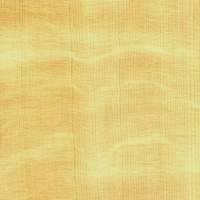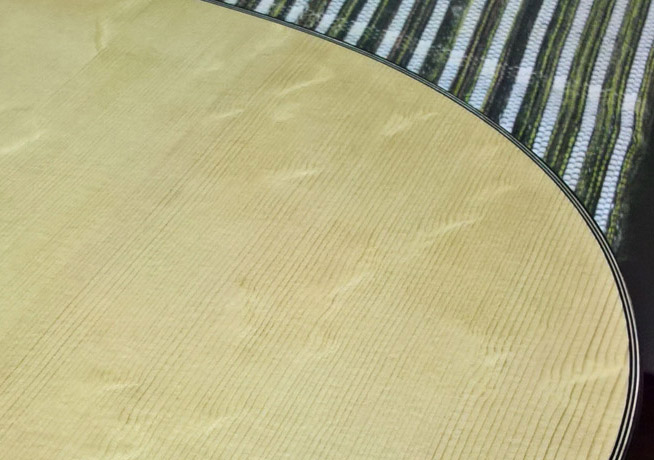|
mqbernardo -> RE: "Hazel-spruce" tonewood (Mar. 8 2017 14:40:36)
|
Greetings!
Haselfichte/ bearclaw / epicia-coudrier refers to the pic Ed posted, spruce with the random indentations that reflect light differntly, acording to the direction of the grain. In his book on building, Romanillos has a small chapter on haselfichte - more of a resume.
I haven´t´t built with it (so probably better to wait for input from someone that has) but i have 4 haselfichte / bearclaw tops sitting in my stash and i don´t find anything exciting about them besides looks. Tap tone seems less lively/more dampened than other spruce tops. Sound velocity along the grain is consistently much lower in these samples, which makes sense since the haselfichte pattern consists of lots of localized, crazy runout disturbing the straightnes"s of the fibers.
If you search that faithful mistress Miss Internet, you´ll get some interesting and contradicting opinions. Dana Borgeois, in his site, states that bearclaw "almost always occurs in older trees that have dense, stiff grain structure and high sound velocity. Thus bearclaw is usually a reliable indicator of the better examples of tonewoods within any given species of spruce.". Dan Hayes, in his respected study on wood for musical instruments finds that "the existence of bear claws leads to high density and damping, detrimental to good musical performance" and concludes that "there does not appear to be any acoustical virtue attached to bear claws". Romanillos knows Hayes study but finds that haselfichte produces "guitars with a bright and singing sound, good projection and lasting sustain".
Go figure.
Cheers,
Miguel.
|
|
|
|


